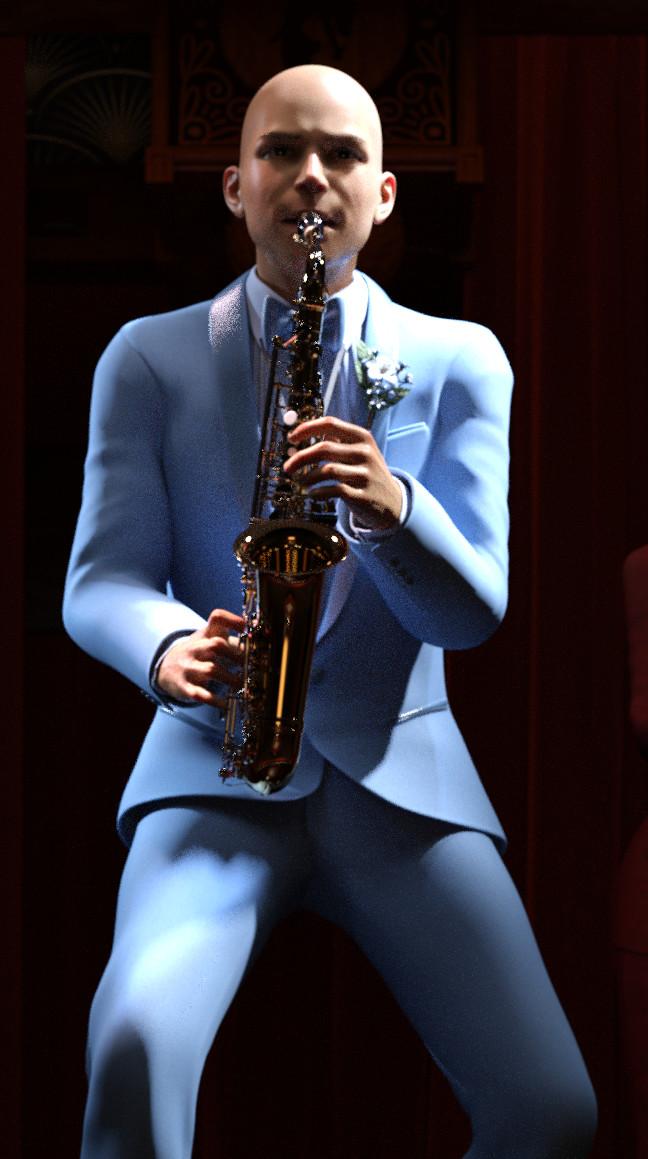Rising Sun Environment (Usage Tipps)
 Rod Wise Driggo
Posts: 2,229
Rod Wise Driggo
Posts: 2,229
in The Commons
This stunning set was briefily discussed in the "appreciate new releases"-thread.
But I think it really deserves a thread on its own. Was a bit sceptial with regards to the price but it is definitively worth every cent.
Now since I started playing around with it I wonder what folks are doing to have the characters populating the environment properly lit. Started to merge some figures into the scene but they appear quite dark once I do not alter anything. So any ideas on best ways to let characters shine in that environment?


Comments
In Vue, you could set the Interface bottom with a radius.
I thought it to be a cool idea for DAZ Studio' environment settings too.
I've noticed that once characters are added to a scene they look very poorly lit as well (when using the default scene cameras and lighting), even though the scene (I am working on a scene in one of the Private rooms) looks OK in a spot render with no characters added. I have added a few ghost lights (wall and ceiling) to up the overall lighting of the room and that has helped a lot, but the test renders are taking a long time to converge, probably because the default light fixtures have emissives and it seems that indoor scenes with a lot of emissive objects are slow to render. Tonight I will try replacing all the emissives with ghost lights and see if that speeds up the render process. Render times aside, I am very impressed with this product, and the sheer number of zero props that can be used for kit-bashing will make it well worth the purchase.
Last night worked some more on my scene--as I suspected, replacing the emissive lights with ball or dome ghost lights dramatically improved the render speed, and gives a little more control over the overall lighting. It is a little tedious to have to position all the ghost lights in the scene, but well worth it for the time saved in running a render.
I bought Rising Sun, but haven't used it yet.
I do hope Iray renders improve again wrt mesh-lights. Didn't they used to be faster or something?
In any event, I'm likely to do a bunch of kit-bashing when I get around to using this set, since I want it to look like it exists entirely in a Decopunk sort of world, down to the point where even the desktop computers look decopunk, or maybe get away with some of the props I'd substitute being steampunk.
If you remember, how long did it take you to replace the emissive lights ? Do you have example of renders done before and after changing them ?
After 10000 iterations, the character at the centre of the stage is still not there despite the whole image having achieved a 99% convergence ratio:
Doing a spot render only on his face, I think after over 20000 iterations, it was still under a 80% convergence ratio…
Removing everything I didn't need from the scene subset I loaded (no idea why the strip neons are loaded with the cabaret preset), then disabling the emissive surfaces that both survived the process and were not visible in the render frame did wonder to the rendering process. It's now way faster and that guy on the stage is far less noisy:
Sorry--just saw your response to my earlier post. Replacing the emissives in the private room scene I was working on took about 30-40 minutes (have to move the perspective view or camera around a lot to make sure the ghost light is properly centered on the emissive object) in total. Can't post renders because the scene is a little NSFW and I didn't finish the scene (started working on other projects and haven't come back to finish this one). Generally with indoor environments emissive objects can add a lot of time to the render since the IRAY engine has to wait until a light ray from the camera bounces off surfaces and ends at the emissive before it considers that part fully converged (kind of backwards from what you would expect but that's apparently how the engine works). Therefore, even objects off camera that are emissive are still counted in the scene when a render is in progress, so as you have discovered it is best to remove or turn off all emissive objects that are not needed before starting a render.